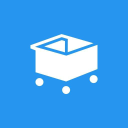How I Built A Business Helping People Land Their Dream Jobs
Hello! Who are you and what business did you start?
My name is Austin Belcak and I run a site called Cultivated Culture where I teach people how to land jobs at the world’s best companies without applying online.
The company has been around for 3 years now and we’ve had 50,000+ people come through our community going on to land jobs at places like Google, Microsoft, Amazon, Facebook, SpaceX, Salesforce, Goldman Sachs, Deloitte, ESPN, and more.

What's your backstory and how did you come up with the idea?
I started Cultivated Culture after struggling to transition into tech as a recent grad with a biology degree and a job in healthcare.
I sent in over 300 online apps and landed less than five interviews. I knew this process was broken but everyone kept giving me the same...
Sorry, you need to login and/or become a member to view the rest of this content. Free Download163 Million Dollar Solopreneur Business Ideas
Free Download163 Million Dollar Solopreneur Business IdeasDownload the report and join our email newsletter packed with business ideas and money-making opportunities, backed by real-life case studies.
Get The Report Free Download163 Million Dollar Solopreneur Business Ideas
Free Download163 Million Dollar Solopreneur Business IdeasDownload the report and join our email newsletter packed with business ideas and money-making opportunities, backed by real-life case studies.
Get The Report Free Download163 Million Dollar Solopreneur Business Ideas
Free Download163 Million Dollar Solopreneur Business IdeasDownload the report and join our email newsletter packed with business ideas and money-making opportunities, backed by real-life case studies.
Get The Report Free Download163 Million Dollar Solopreneur Business Ideas
Free Download163 Million Dollar Solopreneur Business IdeasDownload the report and join our email newsletter packed with business ideas and money-making opportunities, backed by real-life case studies.
Get The Report Free Download163 Million Dollar Solopreneur Business Ideas
Free Download163 Million Dollar Solopreneur Business IdeasDownload the report and join our email newsletter packed with business ideas and money-making opportunities, backed by real-life case studies.
Get The Report Free Download163 Million Dollar Solopreneur Business Ideas
Free Download163 Million Dollar Solopreneur Business IdeasDownload the report and join our email newsletter packed with business ideas and money-making opportunities, backed by real-life case studies.
Get The Report Free Download163 Million Dollar Solopreneur Business Ideas
Free Download163 Million Dollar Solopreneur Business IdeasDownload the report and join our email newsletter packed with business ideas and money-making opportunities, backed by real-life case studies.
Get The Report Free Download163 Million Dollar Solopreneur Business Ideas
Free Download163 Million Dollar Solopreneur Business IdeasDownload the report and join our email newsletter packed with business ideas and money-making opportunities, backed by real-life case studies.
Get The ReportMore Business Ideas Like This





















